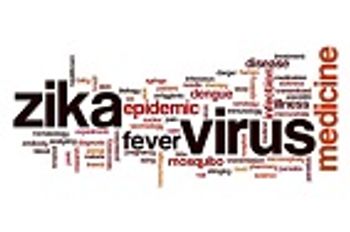
A new potential case of the Ebola virus has been reported in Canada.

Emergency room providers are misdiagnosing too many patients with cellulitis, according to a new study, causing unnecessary hospitalizations and inappropriate antibiotic use.

Satellite images of nighttime lights can improve vaccination coverage in shifting populations.

A recent study finds that when it comes to mosquito-borne outbreaks, in this case, Chikungunya, infections originate around the home with women more likely to become infected than men.

The scope of multidrug-resistant tuberculosis in West Africa, until recently, has not been well-understood, but a new study on eight countries in the region shows that the superbug is more common than previous estimates suggested.

University of California and Stanford University researchers have identified how temperature and humidity work together to affect flu season.

A new study has found no correlation between receiving the Tdap vaccine during pregnancy and birth defects.

The growing number of HIV cases in Russia suggests that global eradication of the virus may not happen by 2030.

Recently, FDA reviewers met to discuss a new drug application submitted by Cempra Pharmaceuticals to treat community-acquired bacterial pneumonia.

A new study from the CDC and the Pew Charitable Trusts shows that 52% of patients are receiving the wrong antibiotics for their sinus infections, middle ear infections, and pharyngitis.

Predicting how long it takes for an infectious disease outbreak to begin may help health officials develop an early warning system, according to the authors of a new study on lag times in epidemics.

The results of an election poll question on conducting an effectiveness trial using genetically modified mosquitoes to combat the Zika virus revealed mixed feelings among Florida natives.

A team of researchers from Tufts University and the University of Maryland have discovered a way to predict cholera outbreaks using satellite data from coastal waterways.

Human trials are currently underway for a potential candidate vaccine for the Zika virus and a novel treatment approach has shown promise in mice.

The Centers for Disease Control and Prevention has issued Zika guidance designed to bolster infection control and limit exposure to clinicians and other caregivers.

The Centers for Disease Control and Prevention (CDC) has identified 18 cases of new swine flu viruses in Ohio and Michigan state fair attendees, highlighting the need for precaution when handling pigs.

Despite the Centers for Disease Control and Prevention's recommendation that the human papillomavirus (HPV) vaccine be routinely given to adolescents and young adults, administration rates for the vaccine are still low.

As travel-related Zika virus numbers continue to grow, New York City bolsters its Zika Preparedness and Response Action Plan.

Students from the University of Sheffield in the United Kingdom have developed a new diagnostic tool which promises a novel way to detect bacterial infections and prevent the inappropriate use of antibiotics for viral infections.

Studies find that a mutated gene that encodes the Ebola virus glycoprotein increased its ability to infect human and primate cells in the 2013-2106 West African epidemic.

A new study by Public Health England researchers finds that disinfectants used against Klebsiella pneumoniae may be helping the pathogen develop new antibiotic resistance.

Weight gain during tuberculosis treatment is an important marker of the restoration of health.

A new study from United Kingdom researchers finds that nearly one-quarter of the global population is infected with latent tuberculosis (TB), a finding that exposes the challenges ahead for the World Health Organization’s End TB Strategy.

The US Food and Drug Administration has approved Selzentry for use in pediatric patients two years of age or older, who weigh at least 10 kg.

Researchers have noted four other features unusual for babies born with congenital infections due to Zika virus infection.

Researchers in the United States and South Korea recently studied the use of an experimental nanoparticle treatment that acts as a decoy to stop and kill the influenza virus.

Researchers at University of Chicago Medicine have created an antibiotic stewardship training program for internal medicine residents that incorporates social media platforms, offering a technological tool for a growing health problem.

There is a stigma that incoming refugees pose a health risk to European communities. In order to assess the risk of possible outbreaks and jump-start prevention, the European Centre for Disease Prevention and Control (ECDC) recommends implementing a multi-step Syndromic Surveillance system.

Drug maker Melinta has submitted their new antibiotic Baxdela for review by the US Food and Drug Administration, with the hopes that it will bring a new treatment option for people suffering from methicillin-resistant Staphylococcus aureus (MRSA).

The World Health Organization (WHO) has released their Global Tuberculosis Report for 2016, emphasizing that today’s global actions and investments are falling far short of what is needed to stop the worldwide tuberculosis (TB) epidemic.